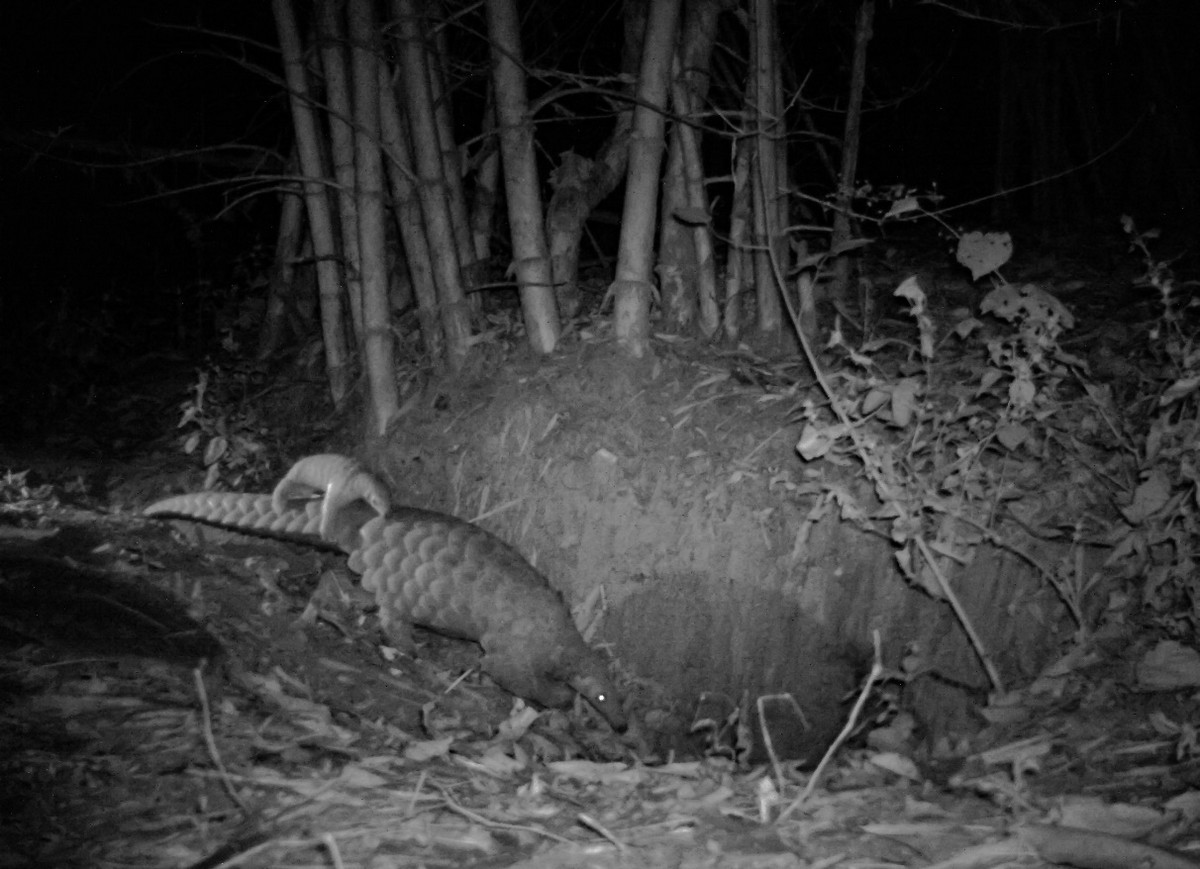We are thrilled to share some incredible news! Our recent camera trap footage captured a heartwarming moment: one of the rescued and rehabilitated female Indian pangolins, with her little pup riding on her tail!
Video: WCT/ MPFD
A journey to recovery
This exciting development unfolded a few days ago in Pench Tiger Reserve, close to where the adult female pangolin was radio-tagged and released by Wildlife Conservation Trust (WCT) and the Madhya Pradesh Forest Department.
In July 2023, this female pangolin was found trapped in an open water tank and was rescued by the dedicated staff of the Madhya Pradesh Forest Department. The WCT and Forest Department’s staff provided expert care to the pangolin before radio-tagging her and releasing her back into the wild.
Video: WCT/ MPFD
A testament to conservation efforts
The successful breeding of this rehabilitated pangolin in the wild is an assuring testament to the effectiveness of our pangolin rehabilitation efforts.
Through diligent and tireless monitoring using radiotelemetry, we can track the movements and behaviour of these pangolins post-release, and understand how they adapt to their new surroundings in the wild.
To date, an impressive 5 out of 10 rehabilitated female Indian pangolins have given birth and raised the offspring successfully!

Photo: WCT/ MPFD
This heartwarming news fills us with hope and inspires us to continue our work in protecting and conserving this endangered, iconic species and its habitat.
Pangolin Pups: A Closer Look
I) A Clingy Companion:
Baby pangolins, also called ‘pangopups’, often hitch a ride on their mother’s scaly tail.
II) Pocket-sized Dynamites:
Newborn pangolins are quite small, measuring around 30 cm. and weighing around 235 g.
III) A Solitary Start:
Pangolin mothers typically give birth to one or rarely, two pups at a time.
IV) A Vulnerable Beginning:
In their early days, pangopups are particularly vulnerable to predators. Their soft pink scales gradually harden, providing some protection.
V) A Mother’s Love:
To safeguard their young, pangolin mothers often retreat to underground burrows, reducing their outdoor activity to the minimum.
VI) A Tight Grip:
Once they emerge, pangopups cling tightly to their mother’s back, using their sharp claws for security.
VII) A Gradual Transition:
While initially relying on their mother’s milk, young pangolins start following their mothers to feed on ants and termites as early as three months old.
VIII) A Long-lasting Bond:
Pangopups stay with their mothers until they become independent at 5-8 months of age.
About the author:
Yogi Ramachandran is a website developer with a passion for wildlife conservation. Leveraging his experience in online marketing, he actively contributes to WCT’s digital initiatives, including content creation, website development, and maintenance.
Disclaimer: The author is associated with Wildlife Conservation Trust. The views and opinions expressed in the article are his own and do not necessarily reflect the views and opinions of Wildlife Conservation Trust.
Your donations support our on-ground operations, helping us meet our conservation goals.
Related Links
- Developing an Ecology-based Conservation Strategy for the Indian Pangolin
- Man’s Best Friend: Sniffer Dogs Aid in Pangolin Conservation
- Man’s best friend, wildlife’s NEW foe!
- Scaling up Pangolin Conservation in India
- 22 amazing tiger facts – LetsTalkTigers
- World Pangolin Day
